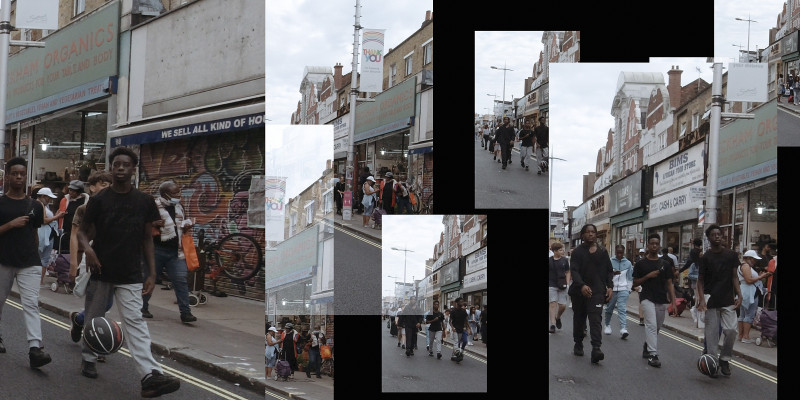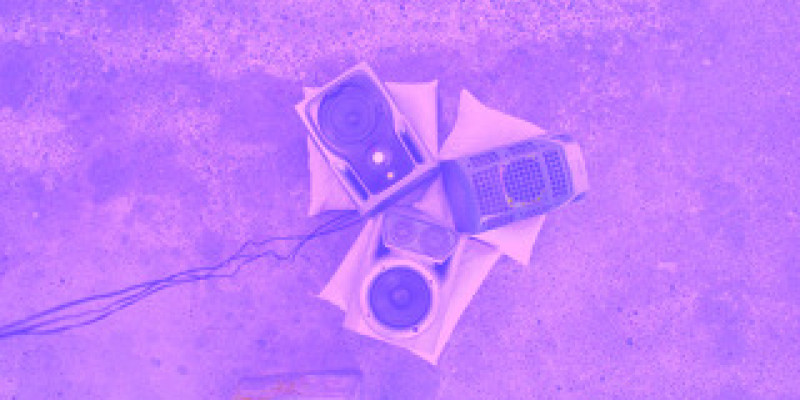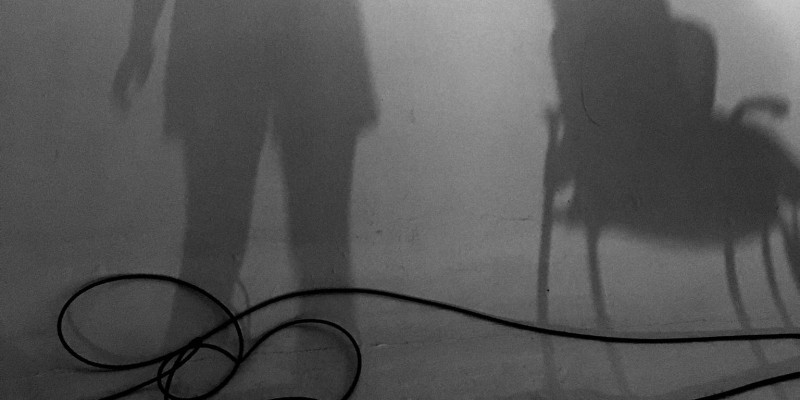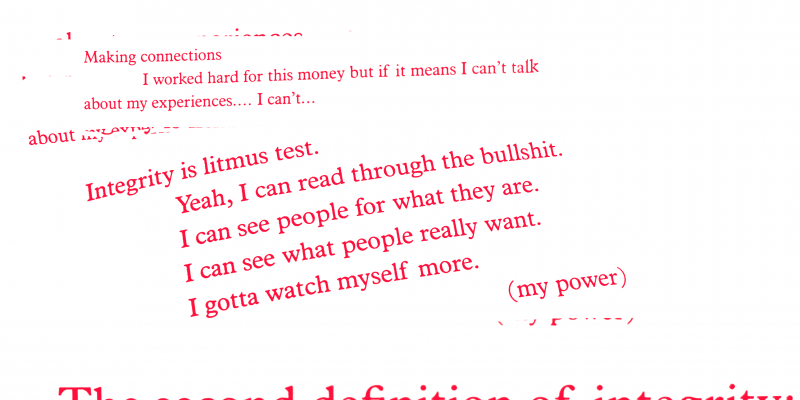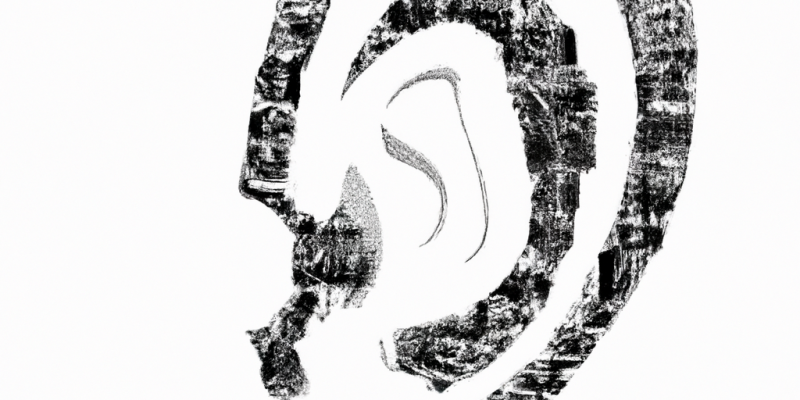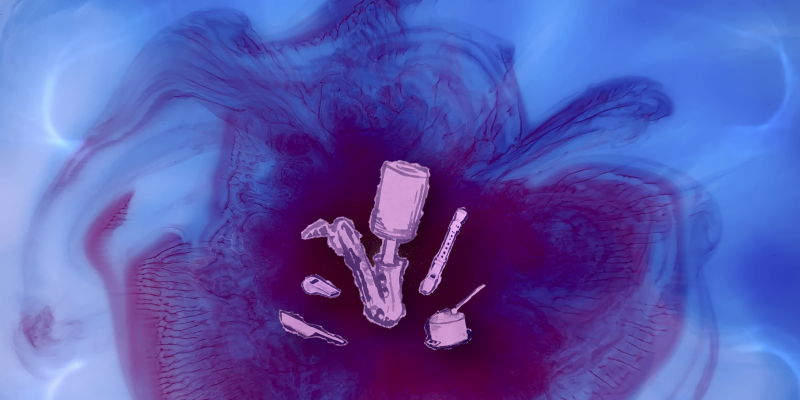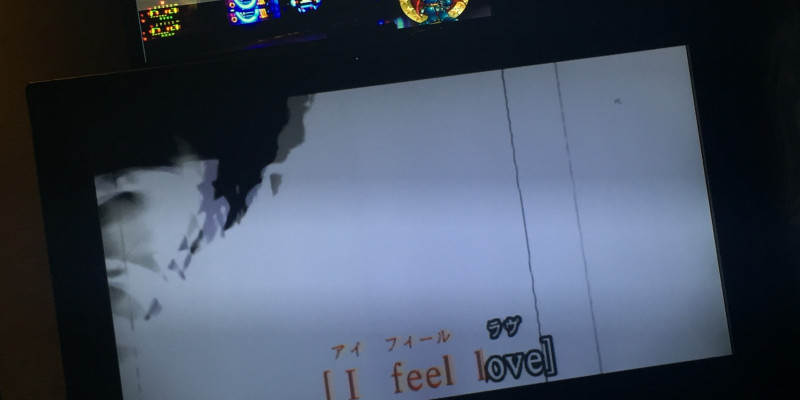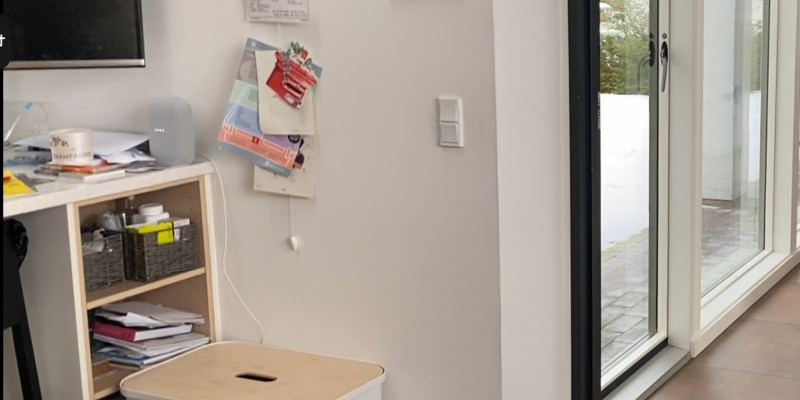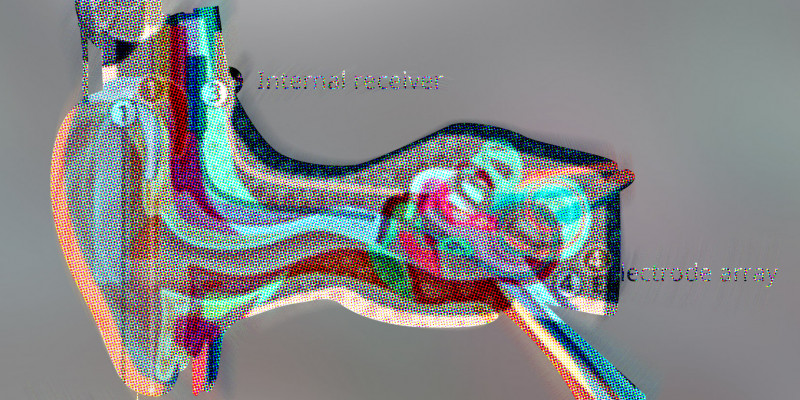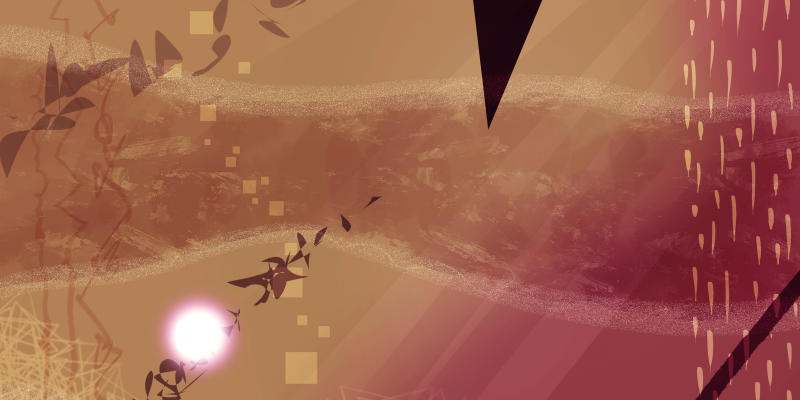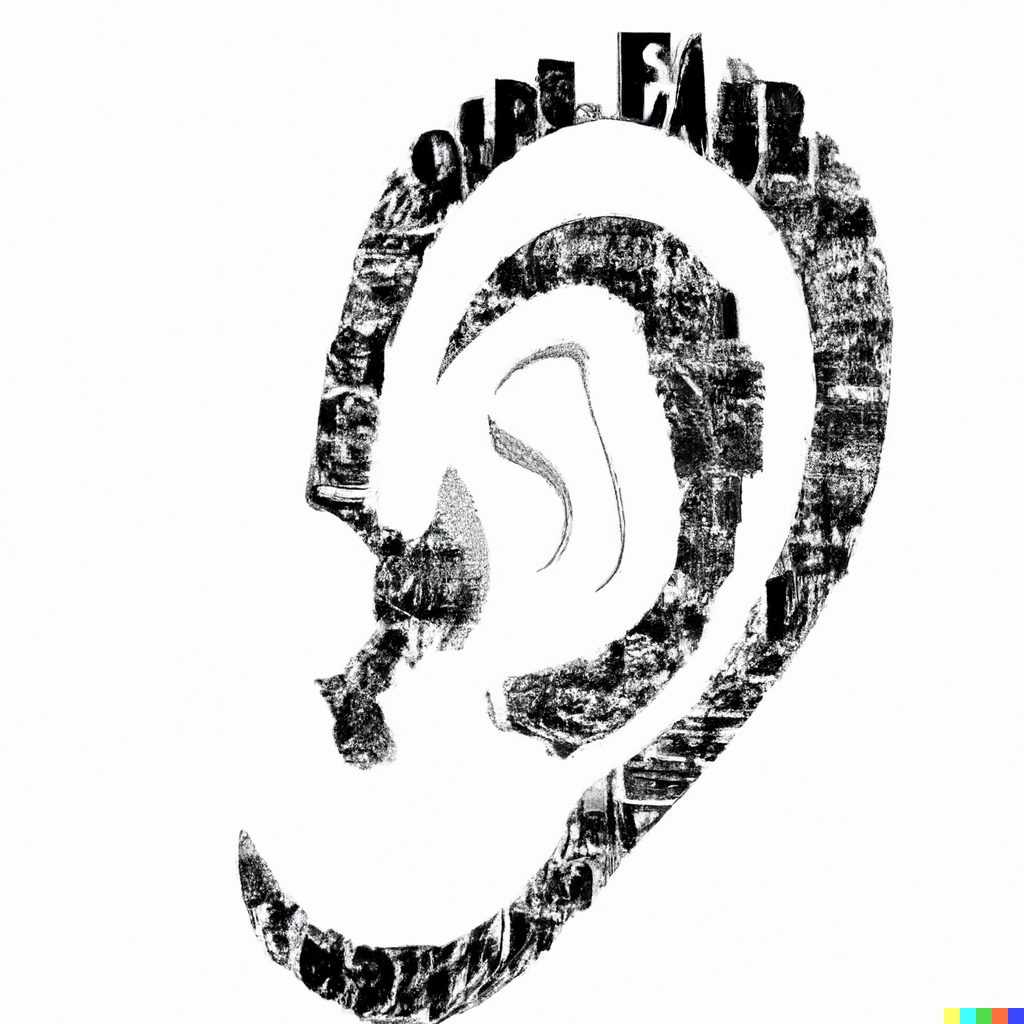
The lyric ear
Abstract
The article analyses the genre of listening scores – texts written in a natural language that provide the readers with instructions to listen in a certain way or to a certain kind of sounds. Belonging to the broader category of text scores, they are instrumental texts that are at the same time often poetic in their form and/or evocative in their language. As such, listening scores can be thought of as monomedial and intermedial at the same time. On the one hand, their material form is that of a written text, not augmented in itself by any other media. On the other hand, the reading of a listening score is necessarily transitory, oscillating between the aesthetic experience of the text itself and the aesthetic experience of listening induced by the text. Although originating in 1970s, the genre has been growing in prominence in recent years, as exemplified by the project A Year of Deep Listening that collected 365 listening scores by a diverse group of artists to commemorate the 90th birthday of the composer Pauline Oliveros.
Drawing on selected case studies from A Year of Deep Listening, as well as Oliveros’ own Sonic Meditations and a number of works by other artists, the article discusses listening scores as a form of intermedial poetry, focusing on two notions that run across the domains of poetry and sound art: defamiliarisation and subjectivity. First, I consider how the poetic defamiliarisation of language is utilised by the artists to break from the habitual and inertial modes of listening. Second, I analyse how the listening scores employ lyric subjectivity to destabilise the reader’s subject-position and challenge the anthropocentric frame of perception.
Introduction
Listen inwardl
to the water
in your body.
Externalize the sound
Into the ocean, river or puddle (Komura, 2022).
The short poem-like text above is a listening score by the Japanese composer Akari Komura created as part of A Year of Deep Listening – a project curated in 2022-2023 by the Center for Deep Listening to commemorate the 90th birthday of the composer Pauline Oliveros. Every day between May 30, 2022 and May 29, 2023, the Center published on its website and social media a text score inspired by Oliveros’ Sonic Meditations – a series of pieces that began in 1970s and became the foundation of the composer’s philosophy and practice of Deep Listening. What made Meditations unique was how they straddled the line between music pieces and meditative exercises. Written in plain text, the pieces do not require any professional musical training – in fact, many of them do not call on the performers to make any sound and only instruct them to listen in a certain way. As such, Meditations could be performed for an audience, but they also functioned as prompts for meditative exercises, and as such were often practices by Oliveros and her collaborators privately. Sharon Stewart (2020, p. 244) characterised the Meditations as a »hack« of the Western tradition of written music. Rather than providing authoritative instructions to be performed with precisions and virtuosity, the text scores were »a vehicle for exploring more internal and intersocial questions, the unfathomable workings of perception and consciousness, questions also addressed by then-extant scientific and psychological experiments and research« (Stewart, 2020, p. 244).
Most importantly, Meditations were not intended to be performed exclusively by professional musicians but were conceived as a participatory work. In the introduction to the first publication of the scores in 1974, Oliveros (1974, n.p.) professed to have »abandoned composition/performance practice as it is usually established today for Sonic Explorations that include everyone who wants to participate«. In the same spirit, the online distribution of the text scores in A Year of Deep Listening is aimed to open the participation for the broadest public irrespective of geographical or social barriers. But at the same time, the publication of these scores for the general audience brings to the foreground their textual nature – or, in other words, the fact that they are not only musical, but also literary works.
Sonic Meditations and the works published through A Year of Deep Listening thus belong to the most prominent examples of listening scores – a genre that exhibits a very peculiar kind of intermediality. Their material form is that of written texts to be read, yet the sensory and social experience that they facilitate unfolds in the dimension of sound and listening. While originating in the 1970s, the genre of listening scores has considerably grown in popularity in recent years. This trend can be related to the broader phenomena of “postdigitality” (Berry and Dieter, 2015) and »nosthetics« (‘nostalgia aesthetics’; Grubnic, 2020) – the turn towards low-tech and no-tech practices seen as resistance to the creeping technologisation of everyday life, but at the same time embedded within the digital structures.
As nosthetics is strongly associated with the popularity of lyric poetry on social media, it makes the parallel between the two artforms, poetry and listening scores, all the more pertinent. However, text scores have generally not been researched from the literary perspective. The aim of my article is to address this gap and explore the way listening scores employ poetic devices to direct and structure listening practices. First, I will contextualise them alongside other artforms that bring together text, sound and performance, such as experimental musical scores, sound poetry or ekphrasis. Drawing on the recent applications of Russian Formalist theory to media art (Benthien, Lau and Marxsen, 2019), I will then discuss how the literary deautomatisation of language can effect a deautomatisation of listening and vice versa. Finally, I will discuss the convergences of the lyric subject of poetry and the phenomenological subject of listening, resulting in a form of relational subjectivity that the listening scores inaugurate.
Listening scores
The terminology regarding the artform that is the subject of this article is somewhat unstable – as, arguably, the genre itself is currently only beginning to become such, despite having its origins in the 1970s. Indeed, one of the goals of this text is to define listening scores as a genre against its manifold ontological uncertainties and contextual entanglements. Oliveros herself mainly referred to her Sonic Mediations and similar works as text scores, without distinguishing between those meant to produce audible music and those meant to guide the reader’s listening. So does the Center for Deep Listening in the description of their project. At the same time, the term “listening score”, as it is used in sound studies or by sound artists, often includes non-textual (visual or sometimes even tactile) elements. Furthermore, in musicological context (particularly, in electroacoustic and acousmatic music) the term listening score or aural score (German: Hörpartitur) has been used to describe a visual representation of the musical form, used as both a tool of music analysis and music pedagogy, to help an untrained listener to make sense of the music (Valiquet, 2022).
In the following discussion, I will focus on the textual listening scores – that is, texts written predominantly in a natural language (as opposed to using a specialised notation system) that provide the readers with instructions to listen in a certain way, with a certain mindset and/or to a certain kind of sounds. Even though in artistic practice the boundary between textual listening scores and the broader category of musical text scores is porous and indeterminate, distinguishing, however fuzzily, between the two is nevertheless meaningful because they are experienced differently. Musical text scores are generally not accessible – and, more importantly, not meant to be performed – by the general audience. Their literary dimension is perceived separately and non-concurrently (if at all) from their sonic dimension. Conversely, in listening scores, the literary and the acoustic merge into one intermedial aesthetic experience. What blurs the borders between the two categories is that certain texts (including many of the Sonic Meditations themselves) can function both as music scores to be performed for the audience and as listening scores to be performed by the audience. This, however, simply means that such texts should be approached as one or the other depending on the context in which they appear. Furthermore, that some listening scores may include soundmaking instructions does not detract from listening being the focus of the experience. Like in other listening-centred practices, such a soundwalking, this soundmaking primarily serves the acoustical exploration of the material and social environment, as well as the listener’s own corporeality, rather than producing a presentational performance. For example, Komura’s score cited above calls for “externaliz[ing] the sound” into a body of water, but this sonic interaction is meant to be listened to by the performer themselves, not a secondary audience (although it is technically possible to perform it for an audience).
As for graphical elements, where they are present in listening scores, they are made sense of through the mediation of the verbal elements, which brings them closer to concrete poetry or visual poetry and thus does not contradict their literariness. For this reason, I am staying with the term “listening score” rather than “text score” in this article, since distinguishing these works from scores intended for music performance is more important than excluding the listening scores that are not fully textual.
The blurriness and instability of contemporary listening scores as a genre seem to reflect their multilinear heritage, as they co-developed in connection both with the experimental musical scores of the post-war Avantgarde and with the listening-centred practices in the arts and humanities that led to the emergence of sound studies and sound art. 20th century composers such as John Cage of Karlheinz Stockhausen adopted imprecise graphical depictions and textual descriptions of music as a tool of aleatoric aesthetic, to facilitate chance-based, intuitive and improvisatory performances. The rejection of precision was meant to horizontalize the music-making process and liberate both sounds and performers from the composers’ dictate (although whether the composers succeeded at this task remains an open question – see Taruskin, 2010, chap. 2). The participatory character of listening scores and their reliance on plain, if poetic, natural language can be seen as a continuation of this line of musical philosophy.
The ideas of the liberation of sounds, particularly non-musical and mundane ones, and the reassessment of their aesthetic value have also driven the »sonic turn« of the 1970s. The World Soundscape Project, arguably, the flagship of this turn, was established by R. Murray Shafer, Barry Truax, Hildegard Westerkamp and others in the late 1960s to explore the acoustic environments and raise awareness towards their effect on the human wellbeing and their preservation. Their research methodology relied in large part on listening exercises, such as sound mapping and soundwalking, guided by both textual and graphical scores. Here an important move occurs from the concept of the score as instructions for musicians to a means of directing the listeners’ perception without introducing new sounds to their acoustic environment.
Sonic Meditations can be situated at the intersection of these two lines. As a composer, Oliveros was an important part of the experimental music scene, and her oeuvre of text scores (as presented, for example, in the Anthology of Text Scores from 2013) contains music pieces in the more conventional sense as well. At the same time, she conceived Meditations as a practice that would “erase the subject/object or performer/audience relationship« (Oliveros, 1974, p. n.p.). The introduction to the score collection names »making sounds” as only one of the practice’s four components, the other three being »actively imagining sounds«, »listening to present sounds” and “remembering sounds«; moreover, music is not the goal but “a welcome by-product of this activity” (Oliveros, 1974, n.p.).
At the same time, the literariness and materiality of the text score takes centre stage in Fluxus Event scores. Hannah Higgins (2002, p. 1) describes Fluxus Events as a »performance technique« by which »everyday actions are framed as minimalistic performances or, occasionally, as imaginary and impossible experiments with everyday situations«. Importantly, unlike text scores for music, Event scores were presented to the public as artworks in their own right in various formats: published as Fluxus editions, exhibited as concrete poetry or as part of »Fluxkits« – small boxes containing all sorts of materials as a sort of miniature art installations. Higgins (2002, p. 114) further argues that the Event scores can be seen as a precursor of conceptual art as they are »textual presentation[s] of a concept that may or may not have a performative dimension«, thus straddling the line between being literary artworks and performance instructions.
Contemporary listening scores – such as the ones presented in A Year of Deep Listening or developed by the participants of Jenny Gräf’s artistic research project Sounding Bodies (2018-2020) – show the influences of all the practices briefly discussed above. Combining the perspectives of Sonic Meditations and acoustic ecology, they offer a variety of approaches to listening to and sounding out both material and social environments, as well as to conceptualising listening itself. At the same time, their textuality may be informed by lyric poetry, concrete poetry and/or visual poetry, making the score itself part of the aesthetic experience.
Intermediality
As I mentioned above, one of the key motivations behind the introduction of text scores was the intent to horizontalise the music-making process and share the composer’s creative agency with the performer (or, in case of listening scores, the public). This motivation does not only mandate the switch from musical notation to text, but also informs its aesthetics: text scores were composed in a way that maximised the interpretative activity. Natural language can, in principle, be used to give specific and precise musical instructions, even if it is not particularly efficient in that regard compared to notation systems. However, oftentimes, text scores exhibit a certain poetic quality – both in the kind of language they use and the way they are structured – on order to activate the performer’s creativity and imagination. For example, the score for Stockhausen’s piece »Downward« (1968) from the cycle Aus den Sieben Tagen (»From the Seven Days«), the flagship piece of his »intuitive music« aesthetic, reads:
play a vibration in the rhythm of your limbs
play a vibration in the rhythm of your cells
play a vibration in the rhythm of your molecules
play a vibration in the rhythm of your atoms
play a vibration in the rhythm of your smallest particles
which your inner ear could reach
change slowly from one rhythm to another
until you become freer
and can interchange them at will (English translation quoted from Harvey, 1975, p. 114)
The first thing that catches the eye is that the score is written as a poem organised into two stanzas. The line and stanzaic breaks serve the structuring of the text in place of missing punctuation while simultaneously reflecting the linear temporality of the piece. The repeating formulas in the first stanza and the use of metaphors such as »rhythm of your atoms« further reinforce the poetic quality of the text score that is meant to inspire the performers rather than strictly directing them.
In their book Literariness of Media Art, Claudia Benthien, Jordis Lau and Maraike Marxsen (2019) explore the aesthetic functioning of texts and textual elements in non-literary artworks. The authors draw on the theories of Russian Formalists that literariness, or poeticity, is an intrinsic quality of a text rather than a genre designation (Benthien, Lau and Marxsen, 2019, p. 18). According to Jakobson (1987, p. 43), »a poetic work is defined as a verbal message whose aesthetic function is its dominant«. To Benthien and her co-authors, this definition implies the possibility to approach texts as literary or poetic across the genres and artforms, analysing the literary quality of textual elements in sound, video and multimedia works.
Similarly, the aesthetic function of language – particularly in the sense of “establishing intensified relations of similarity and proximity between words and letters” (Benthien, Lau and Marxsen, 2019, p. 20) is clearly prominent in text scores such as the Stockhausen example above. The question is, however, whether this function can be considered a »dominant«. The poetic language of »Downward« is instrumental: the text’s primary function is to effect a musical performance. Just like a regular music score, it is generally not meant to be read by the audience – unless, perhaps, as part of liner notes to give the listeners a better understanding of what is happening musically. The primary modality of the listener’s aesthetic experience is that of sound and music, not text.
Listening scores, on the contrary, are addressed directly to the audience. For example, Hildegard Westerkamp’s influential article »Soundwalking« contains a listening score that is intended to help the reader start with the practice:
[…]
Try to move
Without making any sound.
Is it possible?
Which is
the quietest sound of your body?
[…]
Lead your ears away from your own sounds and
listen to the sounds nearby.
What do you hear? (Make a list)
What else do you hear?
Other people
Nature sounds
Mechanical sounds
How many
Continuoussoundscontinuous Continuoussoundscontinuous… (Westerkamp, 2007)
While written in somewhat plainer language than »Downward«, Westerkamp’s score has a similar poem-like structure. Line and stanzaic breaks separate individual actions and sound categories from one another, sequentially putting emphasis on each of them and preventing the reader from glossing over some. Westerkamp further adopts elements of concrete poetry in writing »Continuoussoundscontinuous Continuoussoundscontinuous« to reflect graphically (and to a lesser extent, phonetically) the durational quality of the sounds. And like in Stockhausen’s piece, all these elements serve as indirect performance instructions.
However, unlike »Downward«, the soundwalking score – and all its poetic devices – are to be directly perceived by the reader. Moreover, following the instructions does not produce (at least intentionally) any additional musical sounds that a secondary audience could listened to. The reader of the score and the subject of the listening experience are one and the same – and these two acts also occur at the same time. This disposition does not change in scores, such as some of Sonic Mediatations¸ that call for soundmaking either since music is only »a welcome by-product« of performing them (Oliveros, 1974, p. n.p.). Rather, the performative and soundmaking actions prescribed by a listening score become part of the participant’s aesthetic experience – through proprioception, resonance of the space and social immersion.
This combination of traits – the literariness of the text, the simultaneity of reading and listening and the lack of performer-audience divide – results in a very unique mediality of the listening scores. On the one hand, they are monomedial in the sense that materially they only exist as written texts – they are not sounded themselves, nor lead to the production of intentionally musical sounds. On the other hand, they are intermedial in that they are both read and listened to. Moreover, direct connections can be drawn between the poetic structure of the score and the perceptual structure of the listening it produces.
In this regard, it is instructive to compare the mediality of listening scores to that of ekphrasis. Although traditionally defined as »the imitation in literature of a work of plastic art” (Krieger, 1992, p. 265), contemporary ekphrasis studies have expanded to concept to include more or less all kinds of what Irina Rajewsky (2011, p. 52) calls »media reference« – a more subtle form of intermediality by which one medium takes on some traits of another without directly engaging with. Claus Clüver (1997, p. 26), for example, defines emphasis as a »verbal representation of a real or fictitious text composed in a non-verbal sign system«, while Siglind Bruhn (2001) speaks of »musical ekphrases« where a verbal or visual texts are represented in music.
Like listening scores, ekphrasis employs a single material modality (in most definitions, text) to facilitate an intermedial experience. What distinguishes them, however, is their mechanism of action and the relationship between the parts. Ekphrasis represents something already existing (or imagined as existing) – and already perceived. The aesthetic experience of the original work has already taken place and the reader is invited to relive it from the author’s (or the character’s) perspective. A score, on the contrary, effects a new artifact into being. The aesthetic experience produced by a listening score is unique to its readers-performers and the time and space of their performance. Even though it is structured by the text, it has no precise referent in the text, nor behind it.
Granted, as with most art forms, this distinction between an ekphrasis and a listening score is not at all clear cut, particularly when it comes to imaginary sounds. For example, Niels Lyhne Løkkegaard’s Symphony No. 1 – Music for the Inner Ear (2019) can be reasonably classified as either. The book-length text is a description of a non-existent symphonic piece that the reader is invited to imagine as they read. On the one hand, Music for the Inner Ear is an ekphrasis as it represents an imaginary musical work. On the other hand, the text as intended to function as a score for the reader, who performs it by imagining the piece – in a sense, co-composing and playing it in their mind.
It is worth repeating here that not all listening scores employ exclusively poetic language. They range from evocative poem-like texts to somewhat dry prosaic instructions – although, arguably, even in those cases some graphical structuring is utilised at least as an aesthetic device. Most listening scores employ both poetic and technical styles in some proportion – which is unsurprising as it follows from the dual pragmatics of listening scores as texts for both reading and performing. What is interesting to consider is the function of the poetic language in the context of listening – what does it add to the experience that cannot be relayed with instructions only? Pauline Oliveros’ score »One Sound Once« is an illuminating example of this phenomenon as it contains clearly demarcated poetic and prosaic parts:
One and only one sound
will occur
Indivisible to the ear
First imagine silence.
When you are aware that a sound has occurred (predetermined or spontaneous, prerecorded or live, imaginary or real), focus attention on the space/time between the beginning of the silence and that single sound. Then continue to imagine silence while the equivalent space/time passes.
As an alternative, focus your attention on the sound to come during your imaginary silence. When the sound occurs, compare your imagined and the real versions of the sound… (Oliveros, 2013, p. 41)
Notably, the listening instructions themselves are contained within the prosaic passages of »One Sound Once«. The haiku-like poem that opens the score does not, at first glance, add new information to them. Comparing the poetic and prosaic parts, one can infer that both describe the same listening process in different kinds of language – although, it is questionable that this process could be reconstructed from the poetic part alone. However, while the listening instructions are quite precise, I would argue that simply following them without taking the poetic part into consideration would not produce the desired aesthetic experience either. The function of the poetic part is to set the affective frame for interpreting the following instructions – as well as for listening itself, creating an intimate and somewhat spiritual atmosphere. If the prosaic part tells the reader how to perform the listening, the poetic part brings them into a particular mental state from which the listening can take place.
In other words, listening scores employ their poeticity in a rather unusual way: not as means of expression but as means of framing and conditioning perception. In the following two sections I will discuss how this difference manifests both on the material and phenomenological levels through the notions of defamiliarisation and lyric subjectivity.
Defamiliarisation
The concept of defamiliarisation (sometimes translated as »deautomatisation« or »estrangement«; Russian: »остранение«) was coined by Viktor Shklovsky (1965) to describe the way art breaks its objects free from the habitual modes of perception. Crucially, in poetry this process operates simultaneously at two levels: the poetic form defamiliarises the materiality of the text, which in turn makes its content be perceived in a new way as well. My argument in this section is that the listening scores employ the defamiliarisation effect of poetic language in order to deautomatise listening – a goal professed by many sound artists.
According to Shklovsky (1965, p. 12), the primary means of poeticity are aesthetic devices, whose function is »to make objects ‘unfamiliar,’ to make forms difficult, to increase the difficulty and length of perception because the process of perception is an aesthetic end in itself and must be prolonged.« This »difficult form« finds a parallel in German literary scholar Jürgen Link’s (1977) concept of “excess structuring” (‘Überstrukturierung’; transl. by Benthien, Lau and Marxsen, 2019) by which the linear syntactic structures of the text become overlayed non-linearly with other rhythmical, sonic and graphic structures. Furthermore, as the authors of Literariness of Media Art argue, excess structuring and difficult form do not have to be achieved by strictly linguistic means for the artwork to attain poetic quality (Benthien, Lau and Marxsen, 2019). Rather, intermediality itself can be regarded as a defamiliarising device, since a visual or sonic setting of a text introduces additional aesthetic structures in excess of those naturally present in language. In that sense, the intermedial quality of the listening scores already contributes to their poeticity, as the listening produced by the text in turn informs the way the text itself is perceived. This particularly explains how a poetic quality emerges even in those listening scores that are written in plain, descriptive and even somewhat technical language. This effect functions in the opposite direction as well – perhaps even more evidently – as listening according to a score marks the experience as aesthetic and brackets it off the habitual modes of perception.
However, as mentioned above, many – if not most – listening scores also employ the poetic techniques directly. For example, Nik Forrest’s score »Ear Hands« published as part of A Year of Deep Listening exhibits a variety of such devices:
How do your hands listen?
How do they attune to your surroundings?
Listen to the vibrational field that you are part of by touching
surfaces, structures, materials;
Imagine your hands as porous, molecular antennas, sending
and receiving information
with other listening-sounding materials, beings, forces.
Listen until no-one is at the centre of listening. (Forrest, 2022)
The short text contains instances of many classical poetic tropes: metonymy (»How do your hands listen?«), simile (»hands as porous molecular antennas«), metaphor (»centre of listening«, »porous molecular antennas«) etc. The use of such poetic language imbues the listening instructions with gravitas, fostering an intimate lyric atmosphere in which the listening is to take place. Moreover, the text’s graphical structuring also serves as an aesthetic device. As Ruth Finnegan (2017, p. 25) observes, »poetry is normally typographically defined« – it is distinguished from prose first and foremost by the way it is written or printed: »as verse«. Employing poetry-like graphical structure marks the listening score as an aesthetic artifact rather than a purely functional text. Boris Tomashevsky (1985, p. 113) calls layout a »graphic device« as it underscores the artfulness of the text, its »artistic construction«. Taken together, these poetic devices emphasise the poeticity of the listening score which in turn primes the reader to approach the listening also as an aesthetic experience – even though the content of this listening in most cases would consist of rather mundane everyday sounds.
The framing of mundane sounds as aesthetic can also be described as a defamiliarisation or deautomatisation of everyday listening. And as such, it has been one of the key practices of experimental music and sound art, extending beyond just the listening scores. John Cage once famously proclaimed that he prefers listening to traffic than to classical music because »if you listen to Beethoven or to Mozart you see that they are always the same, but if you listen to traffic you see it’s always different« (Listen, 2003). In the late 1960s, Max Neuhaus, dissatisfied with the practice of merely absorbing mundane sounds into musical compositions to be played in concert halls, organised several listening tours around the traffic-heavy and industrial areas of New York. The participants of the tours received a rubber stamp with the word “listen” on their hands, then followed the artist in silence through the streets. The artist called these events »Lecture Demonstrations«: »the rubber stamp was the lecture and the walk was the demonstration« (Neuhaus, 2006, p. 191). However, the stamp can be also approached as a minimalistic listening score in the form of a concrete poem – indeed, according to Neuhaus (2006, p. 190) himself, the »clean visual shape – LISTEN – when capitalized« was part of the impetus for the work.
As Kate Lacey (2016, p. 216) insightfully observes, »sound artists have long been driven by a mission not only to get people to listen to different things, but to listen differently – indeed to make listeners self-reflexively aware of themselves as listeners«. Rather than incorporating everyday sounds into music, the acoustic ecology movement employed a number of music-inspired techniques – such as soundscape composition or the already mentioned soundwalking scores – to defamiliarise the everyday listening to the sonic environments. Concurrently, Pauline Oliveros created Sonic Meditations and developed her music philosophy of Deep Listening as means to achieve a state of hyperawareness of one’s material and social worlds through an intensified listening deautomatised by meditative exercises and listening scores.
All of these examples clearly show the sound artists’ use of aesthetic devices »to increase the difficulty and length of perception«, as well as a belief in »the process of perception [as] an aesthetic end in itself«” (Shklovsky, 1965, p. 12). In other words, applying the Formalist perspective to sound art reveals that its defamiliarisation of sound and listening operates through largely the same mechanisms as the defamiliarisation of language in poetry. In case of listening scores and their particular intermediality, this parallelism turns into a convergence, as the literary devices in the text mark the listening – taking place outside of the text – as aesthetic. And vice versa, the aesthetically informed listening in turn brings additional poeticity to the listening score itself.
Returning to the example of »Ear Hands«, it is easy to reconstruct the effect of its poetic devices on listening. The metonymy of »How do your hands listen?« prompts the reader to reimagine their body as an assemblage of individual – and individually listening – parts, each endowed with its own perceptual agency. Similes (»hands as porous, molecular antennas«) and metaphors (»centre of listening«) further engender the spatialisation and dissolution of the listening subject in the acoustic environment, directing the reader-listener’s attention to their relational embeddedness. As with other examples discussed in this article, the graphic structuring of the text is intuitively translated into the temporal (or spatiotemporal) structuring of the listening experience, where the prosodic, syntactic and graphic rhythms become the rhythms of perception. Overall, the score’s poetic devices facilitate an ecological frame of listening perception, reconnecting the reader to their material environment and their own embodiment.
The poetic devices in listening scores thus function on two levels simultaneously. On the one hand, the defamiliarised language of the text evokes a certain affective state – an atmosphere, or a mood – much like lyric poetry does. On the other hand, this does not constitute the whole of the aesthetic experience, but rather primes the reader for defamiliarising their listening. Entering the affective atmosphere of the text induces a certain frame of perception in the reader and attunes them to their acoustic environment. While the instructive aspects of the score tell the reader-listener how to perform their listening, the poetic devices partake in the production of meaning as they are applied, both proactively and retroactively, to the listening experience.
Subjectivity
The analysis of the poetic devices in »Ear Hands« reveals another mechanism by which listening scores defamiliarise perception: through reimagining the listening subject. Oscillating between evocative language and direct instructions, the text draws the listener’s attention to the materiality of their own body and the corporeality of perception, challenging the Cartesian disembodied and individualistic concept of the subject entrenched in Western culture. This brings to the foreground another aspect of poeticity that becomes refracted in listening scores – the lyric subjectivity.
The concept of lyric poetry as a subjective genre goes back to Hegel’s aesthetics. According to Hegel, a poem’s content »is not the object but the subject, the inner world, the mind that considers and feels« (1975, p. 1038). Just exactly who this subject is remains somewhat ambiguous in Hegel's writing: while it serves as a conduit for the subjectivity of the poem’s empirical author, it is at the same time in some sense universal, abstracted and idealized.
This ambiguity of the lyric subject has made it a rather contested concept for later literary theory, with most theorists considering it outdated. Already in early 20th century, Margarete Susman (1910) suggested the term »lyric I« do disambiguate the grammatical subject of the poem. Taking this a step further, the German literary scholar Kaspar Spinner (1970) reimagined the lyric subjectivity in a reader- rather than author-centric way. According to Spinner, the lyric »I« is an »empty deixis« – a grammatical index of the subject that does not have a real-life referent and is to be filled by the reader’s imagination. Similarly, Heinz Schlaffer (1995, p. 41) claimed that “since the ‘I’ of the poem can be neither named nor described, it seems likely that the only »I« present takes its place: that of the reader who reads the poem, aloud or silently, to him or herself or into him or herself” (English translation quoted from Benthien, Lau and Marxsen, 2019, p. 120).
This concept of the lyric subject is not without limitations, particularly when it comes to listening scores that typically do not feature an »I«. However, lyric subjectivity need not necessarily be explicitly expressed in the text through first-person pronouns or other grammatical features. In his book Poetry as Discourse, Anthony Easthope (2002, p. 42) distinguishes between the explicit »subject of the enounced« and the implicit »subject of enunciation« assumed as the source of utterances even in absence of pronouns and other grammatical markers of a speaker. Moreover, Easthope also insists that both these forms of the subject are reconstituted by the reader in reading the text. Helen Vendler (2009, p. xi) puts this reconstruction into explicitly performative terms, which particularly resonates with the pragmatics of listening scores: »a lyric poem is a script for performance by its reader […] we do not listen to [the speaker]; we become him.«
At the same time, a number of major recent works of lyric theory (e.g., Culler, 2015; Geist, Reents and Stahl, 2021) have been revisiting Hegel, often by way of the language philosopher Käte Hamburger (1973), and re-examining the ambiguity of the author-subject relationship. Henrieke Stahl (2017, 2021), for example, draws on neo-transcendental philosophy of Heinrich Barth (1965) to describe lyric subjectivity itself as a relational structure that connects both the empirical author and the reader, as well as all the personas manifesting the poem and its paratexts. From this perspective, lyric subjectivity could be perhaps reformulated as lyric intersubjectivity, an interaction mediated by the poetic text rather than a feature of the text.
What forms does lyric subjectivity take in listening scores? One obvious aspect that I already mentioned is that they are typically written in imperative and therefore feature a lyric »you« (either explicit or implied in the imperative) rather than a lyric “I”. This is, however, not uncommon for lyric poetry as well. The lyric »you« constructs the Other to the lyric »I« – an indeterminate subject-position that oscillates between an ambiguous »not-quite-present addressee, whether historical, mythical, or yet to be born« and »that other sort of lyric you that pursues, pins, or holds in deadly fascination the one spoken to. (Often it is the reader.)« (Waters, 2003, p. 16). As Jonathan Culler (2014, p. 165) puts it, the lyric »you” foregrounds »the indeterminate potential that makes you at once a specific other, the most general other, and one, a pure place holder for indeterminate agency.«
To go into further detail, let us consider the example of the listening score »mkpọtụ ochie« by the Nigerian-American artist chukwumaa:
Listen for something that’s been here before you,
it can be quiet or loud or silent or gone,
but listen for it.
Take time to imagine how long that sound has been
ringing out. Where did it start? Could it end before you?
Could it ever end?
Is it close or far away? How do you know?
Has it changed while you were listening?
Have you? (chukwumaa, 2022)
The text has an explicit lyric »you«, however it operates somewhat differently from the »you« of lyric poetry. The »you« of the listening score is unambiguously its reader – which means it both functions as an »empty deixis« for the reader to project their subjectivity onto, but also as specific reference to an individual person that is the reader. Furthermore, the aesthetic content of the text is not the past experiences, thoughts and feelings of an implied »I« that are addressed to the »you«, but the very listening that the reader performs – in other words, the future experiences, thoughts and feelings of the lyric »you«. Even though the text does not contain any first-person pronouns, the image of the implied author is constituted in the questions addressed to the addressee – who, as noted above, is specifically the reader. In that way, the listening score turns the traditional poetic structure on its head, constructing a »you« as the specific subject of experience and an implicit »I« (subject of enunciation) as its abstract Other. However, it is also not the author of the text, whether real or implied, to whom these questions are answered, but once again the reader themselves. In other words, much like in lyric poetry, the reader projects their subjectivity onto the lyric »I« as well. Hence, rather than establishing the lyric »you« and »I« as an opposition, the listening score merges them together, while at the same time prompting the reader to inhabit two (or more) subject-positions simultaneously.
That the listening scores produce this kind of distributed, intersubjective and relational subjectivity is hardly coincidental as it is central to many sound art practices and sonic philosophies. Both Deep Listening and acoustic ecology cast listening as a way of destabilising the Cartesian subject rooted in vision and written language in favor of ecological and communal modes of being in the world. This sensibility is further reinforced in recent sound art informed by decolonial and posthumanist theories (see, e.g., Gilmurray, 2016; Vandsø, 2020; Vieira de Oliveira, 2020).
Sound art and sound studies posit that the subject of listening is necessarily embedded in relational networks with their material and social environment. As Salomé Voegelin (2010, p. xii) argues in Listening to Noise and Silence, “the listener [is] intersubjectively constituted in perception, while producing the very thing he perceives”. Similarly, according to Jean-Luc Nancy (2007, pp. 21–22), “the subject of the listening or the subject who is listening (but also the one who is 'subject to listening' in the sense that one can be 'subject to' unease, an ailment, or a crisis)' is “perhaps no subject at all, except as the place of resonance.«
Furthermore, as Alan Licht (2019, p. 6) observes, »sound art is conceived in terms of listener-to-listener relationship between the artist and the audient”. While in general I find this definition of sound art is rather limiting, many sound artists indeed see their aesthetic practice as that of sharing their listening experiences and modes of listening with the audience. From this perspective, the lyric subject of listening scores can be seen as an aesthetic device that communicates the artist’s listening to the reader. While the instructive aspects of the score communicate the process of listening, the lyric subject – both as explicit »you« and implicit »I« – as it is inhabited by the reader, makes them assume the artist’s listening perspective.
Conclusion: intermediality and/as intersubjectivity
The analysis of history and aesthetics of listening scores in the above section reveals them to be intermedial artworks that function simultaneously as both literary (often poetic) texts and sound art pieces. However, unlike established forms of sounding literature (e.g. sound poetry or radio-drama) they do not focus on the acoustic dimension of the text itself. Rather, they utilize the text’s poetic devices to defamiliarise the listening experience, making the reader-listener (hyper)aware of their acoustic environment (or certain specific aspects of it).
Among these poetic devices, a particularly salient one is lyric subjectivity. Listening scores employ forms of lyric address and “empty deixis” to destabilise the reader’s subject-position, making it embedded and relational. This, in turn, induces an intersubjective frame of listening – of »co-listening«, to use Budhaditya Chattopadhyay’s (2023, p. 173) term: »a socially and community-driven listening mode, in which listening together both in situ and online reaches a whole new affective dimension of social cohesion nurturing solidarity.« A collaborative and participatory ethos suffuses listening scores on all levels: from their textual medium as a means of accessibility for non-musicians to the way they circulate, e.g. in case of A Year of Deep Listening, in the context of participatory culture online. Even the listening scores intended for solo performance maintain an intersubjective sensibility through establishing a direct relation of co-listening between the reader and the author, whose listening perspective the reader assumes.
Furthermore, in contemporary listening scores, informed by ecological and posthumanist thought, this lyric (inter)subjectivity may operate across the human-nonhuman divide. Works such as Komura’s »Water Body«, which opens this article, prompt the reader-listener to enter a nonverbal dialog with nonhuman entities, becoming hyper-aware of their embeddedness in the ecosystem. Defamiliarising perception and destabilising the subject-position can thus serve as means of decentering the reader-listener’s own humanity, facilitating non-anthropocentric modes of listening.
Funding statement
This article is part of a project that has received funding from the European Research Council (ERC) under the European Union’s Horizon 2020 research and innovation programme (grant agreement No 884177).
Views and opinions expressed here are those of the author only and do not necessarily reflect those of the European Union (EU or the European Research Council (ERC). Neither the EU nor the ERC can be held responsible for them.
